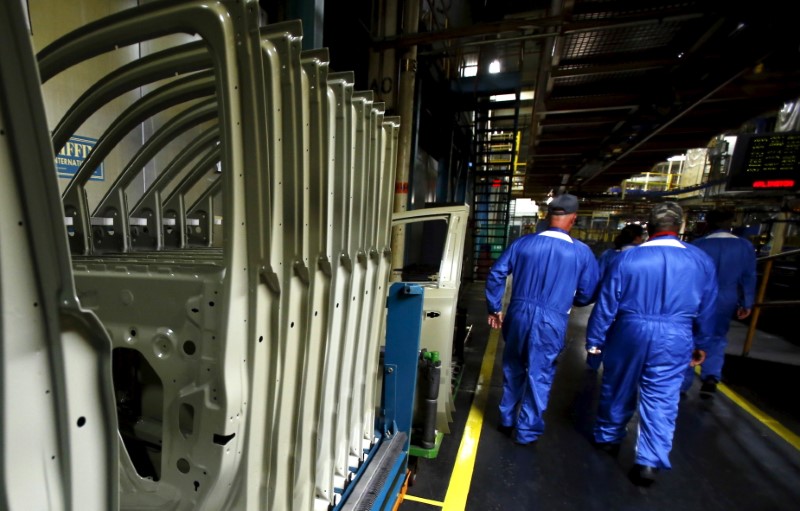By Lucia Mutikani
WASHINGTON (Reuters) - New orders for U.S.-made goods recorded their biggest decline in six months in January and business spending on equipment appeared to be slowing after strong growth in 2017.
Factory goods orders fell 1.4 percent amid a broad decrease in demand, the Commerce Department said on Tuesday. That was the largest drop since July 2017 and followed five straight monthly increases. Factory orders rose 1.8 percent in December.
January's drop in orders was broadly in line with economists' expectations. Orders surged 8.4 percent on a year-on-year basis.
Orders for non-defense capital goods excluding aircraft, which are seen as a measure of business spending plans, fell 0.3 percent in January instead of declining 0.2 percent as reported last month. Orders for these so-called core capital goods decreased 0.5 percent in December.
That was the first back-to-back drop since May 2016. Shipments of core capital goods, which are used to calculate business equipment spending in the gross domestic product report, slipped 0.1 percent in January instead of edging up 0.1 percent as reported last month.
Core capital goods shipments increased 0.7 percent in December.
Prices of U.S. Treasuries rose after the data, while the dollar (DXY) held at lower levels against a basket of currencies. U.S. stock indexes were trading slightly higher.
TAX WINDFALL
Business spending on equipment is cooling after growing by a robust 4.8 percent in 2017.
But it is likely to remain supported as companies are expected to use some of their windfall from a $1.5 trillion tax cut package to buy machinery and other equipment as they seek to boost sluggish productivity.
The Trump administration slashed the corporate income tax rate to 21 percent from 35 percent effective in January. The tax cuts, a weakening U.S. dollar and strengthening global economy are expected to support manufacturing, which makes up about 12 percent of the U.S. economy.
Sentiment among manufacturers remains bullish. A survey last week showed a measure of factory activity rose in February to its highest level since May 2004. But supply constraints and labor shortages are emerging, which could hurt factory output.
In January, orders for transportation equipment dropped 10.0 percent, weighed down by a 28.4 percent plunge in the volatile orders for civilian aircraft.
Orders for machinery dropped 0.4 percent, the biggest decline since October 2016, after rising 0.6 percent in December. Orders for mining, oil field and gas field machinery tumbled 8.9 percent after increasing 5.0 percent in the prior month. Orders for motor vehicles fell 0.5 percent, reversing a 0.4 percent gain in December.
There were also declines in orders for primary metals and electrical equipment, appliances and components. But orders for computers and electronic products orders rose 0.5 percent.
Pointing to a slowdown in manufacturing, unfilled orders at factories fell 0.3 percent in January. That was the biggest drop in six months and followed four consecutive monthly increases. Manufacturing inventories increased 0.3 percent. They have risen in 14 of the last 15 months.

Shipments of factory goods increased 0.6 percent in January after advancing 0.7 percent in December. The inventories-to-shipments ratio was unchanged at 1.35.